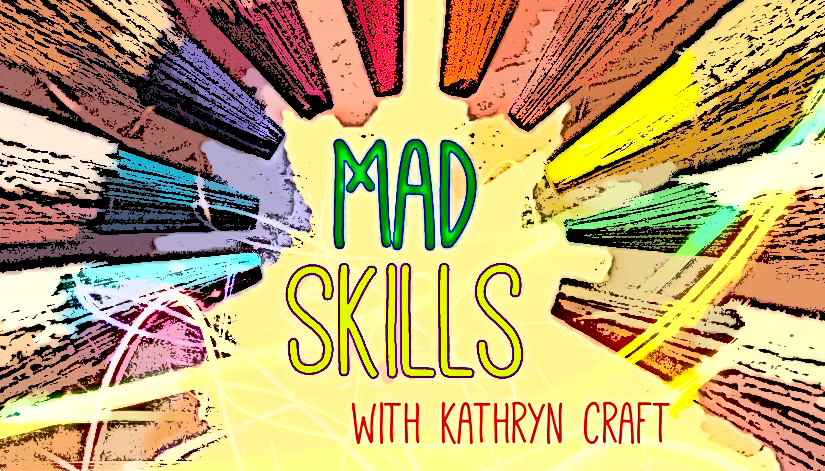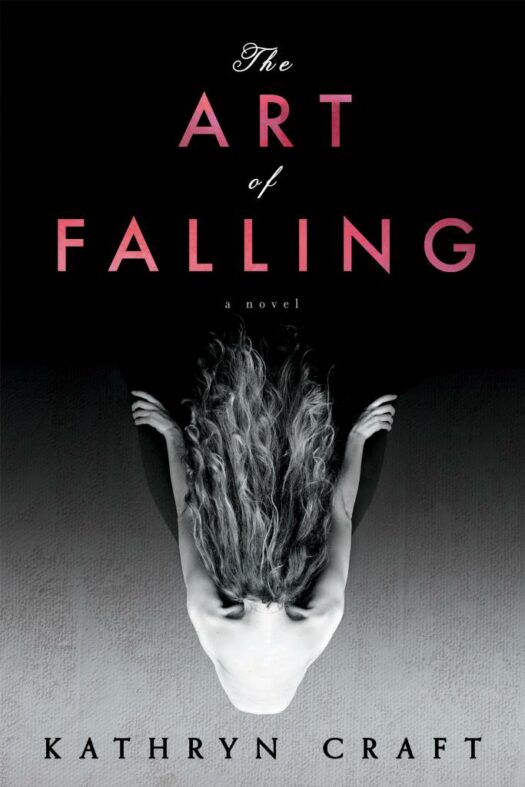Making Your Big Issue Work through Story, Part 2
By Kathryn Craft | November 4, 2021 |

photo adapted / Horia Varlan
If you feel called to write about Big Issues—the illegal poaching of endangered species, abolishing nuclear weapons, our dwindling supply of fresh water, or sex trafficking, among so many worthy others—welcome to the club! Writers have always been drawn to life’s most divisive conflicts. And if I could suggest just one piece of advice that all writers follow, it would be to write about what matters to you the most.
A Big Issue novel can experience a few predictable pitfalls, however. As you plan or revise yours—and building upon suggestions posed in Part 1 last month—here are some considerations to ponder, born of my experience as reader, writer, and editor.
Consider making the plot as personal as possible
If this sounds counterintuitive for a Big Issue, think for a moment about how our emotions work. Long before we know what to think about something, we know how we feel about it. This is part of our body’s grand design. Our emotions keep us safe by allowing us to instantly assess a situation using criteria pulled from the same resources that our slower, logical brain will later consult: our huge internal warehouse of good and bad experiences, and the perceptions we’ve created from them. This suggests a few things:
a) that no two characters will have feelings formed from the exact same criteria,
b) that the nature of specific feelings are universal and relatable, and
c) that our emotional nature, created to ensure our survival, is our most deeply selfish attribute.
In a Big Issue manuscript, stakes like “the end of mankind” or “the implosion of our planet” can be difficult to latch onto. On one hand, stakes don’t get much higher than that. But on the other hand, if we all hit “the end” at the same time, well, who’d be left to care? Since we have to die anyway, going all at once sounds idyllic to me. (This is the import of Cormac McCarthy’s The Road—there’s someone left to care.)
Similarly, it can be hard to be hooked by a story whose protagonist sets the goal of “helping others.” That’s not enough—I’ll still be looking for story. What is this character’s kickback for being altruistic? Is she desperate for an identity that will make her low self-esteem easier to abide? Was she brought up with the sense that love needed to be earned? Is she trying to right a past wrong, or to create meaning from her suffering by ensuring that others need not suffer as well? Her goal lacks the specificity needed to create relatability. If readers know why she needs to be altruistic, we’ll understand better what the stakes are if she’s kept from exhibiting this trait.
The protagonist’s experiences, desires, thoughts, and feelings will define our experience of the novel—not our thoughts about its Big Issue—so that protagonist needs a goal, and associated stakes, that are deeply personal. She needs to have skin in the game.
When confronted with the goal of altruism in manuscripts, I always think back to an old episode of Friends, “A Selfless Good Deed,” in which Joey says that selfless good deeds don’t exist. Phoebe wants to prove him wrong.
Problem is, she can’t.
At one point, trying to be altruistic, Phoebe relates this story to Rachel and Monica. “You know that really old guy who lives next door to me? Well I snuck over there and raked up all the leaves on his front stoop. But he caught me, and force-fed me cider and cookies and then I felt wonderful. That old jackass.” (Click here for a highlights reel of the story thread.)
Even though that episode originally aired in 1998, it has always stuck with me because of its profound message: Our emotions work to either to make us feel better, or if we feel bad, to signal that something’s amiss. As part of our survival mechanism, emotions are part of a design that has us reaching for our own oxygen masks before helping others. To arrive at a relatable motive for your altruistic protagonist, think about how she will benefit from doing this work.
Consider complicating the Big Issue with other perspectives
One way to explore your Big Issue without preaching is to orchestrate a cast that will demonstrate strong and relatable perspectives concerning that issue, so the reader can empathize with each of your characters. I’ve seen too many lopsided manuscripts that dramatize only the author’s perspective. Even if you decide that your protagonist will embody that perspective, she should struggle with inner conflict.
Giving each character a good reason for acting the way they do will benefit your plot as their varying beliefs send them on intersecting paths. This will give them perspectives to argue for and work through as they try to decide whether their seemingly immovable stance warrants their loss of important relationships. Do this right and you’ll not only make the reader care, you’ll twist her stomach in knots.
My favorite example of the character orchestration I’m suggesting is in the film The Cider House Rules, based on John Irving’s novel of the same name. Here are the major players.
Dr. Larch performs abortions on the sly but also runs an orphanage, dulling the psychic rift this causes through his ether addiction.
Homer, raised at the orphanage, would have had no life if he’d been aborted. He is now an unwilling apprentice, being trained by Dr. Larch to perform abortions.
Candy gets an abortion from Dr. Larch after getting pregnant by her soldier fiancé, Wally. Homer leaves with them to see more of the world but Wally is soon called back into service. While working at Wally’s parents’ apple orchard, Homer falls in love with Candy.
Arthur, the head of the migrant apple-picking crew, rapes and impregnates his own daughter, which challenges Homer to perform his first abortion—with Arthur helping.
It’s so clear that this story, which comes at the issue of reproductive rights from so many angles, is rife with conflict.
Compare that approach to Irving’s 2019 opinion piece for The New York Times, “The Long, Cruel, History of the Anti-Abortion Crusade,” which carried this subhead: “Abortion opponents don’t care what happens to an unwanted child, and they’ve never cared about the mother.” (Come on, John, tell us how you really feel!) The writing is compelling, if the reader is of a mind to continue beyond the title. Many will not—but they just might pick up the novel.
Consider why you are writing the novel
By all rights this consideration should have come at the beginning of Part 1 of this post, yet it builds nicely on the points already mentioned. In driving your story with this Big Issue, do you really want to make everyone think the same way you do? After our last and very contentious presidential cycle, your quick answer might be yes! and thank you! and that would be a relief!
Think again.
What a dull world that would make—and there would certainly no longer be a need for art, which by definition is an individual expression of perspective. Maybe a more realistic and useful author goal would be to promote understanding and respect by giving your reader the opportunity to walk a few miles in each of your character’s shoes. As storytellers, we know our world is stronger for our varying perspectives.
Pleases share. Have you orchestrated a cast of characters around a Big Issue premise, or do you have ideas about how you might do so? Or have you motivated a character to do a seemingly selfless thing in order to obtain an emotional kickback? Can you think of other stories that demonstrate these issues?
[coffee]










You’re speaking to my story heart. The kickback is real. My poor MC just had an overdue good day, involving some vulnerability on her part (risky, it can mean rejection), and this next day… ouch. I realized a few years ago that I can’t help being a big issue writer, but it took a bit to learn how to make it so personal that it’s universal (and to not be preachy).
I love this set of posts, Kathryn. Thank you for writing them.
I appreciate your comment Lynn, and the predicaments our poor characters find themselves in! On a cross-country drive right now, so I fear my I may be delayed in answering comments, but thanks for reading, as always!
So much good information here! I guess I’m a ‘big issue’ writer too. I started writing my novel, Where the Stork Flies, about a female ancestor and ended up writing about domestic abuse! I tried to show it from the perspective of several different characters, though all are horrified by it. Thanks for giving me more to think about!
Thanks Linda! I suspect it’s impossible to keep the big issues we care about FROM showing up in our stories. That makes perfect sense in light of the role of the subconscious in the creative process. Thanks for this thought-provoking comment.
Kathryn, I’m really enjoying your series on Big Issue books. I also tackled the thorny issue of abortion in BOUND from various POVs and I remembered Cider House, how deftly Irving captures the nuances of why people want it. I tried to do the same with each major character taking on a different view on it. I’m tackling totalitarianism right now through the lens of a domestic tale. A couple of critters want more of the political aspects but it is harder to do when my MC is still a child and I don’t want to break out of her voice. Newspaper articles might fill that gap. Even as a child, I never really liked the way history was taught, with this war and that war and the number of casualties. I always wanted stories, particularly stories of forgotten people, how it affected them. They resonated the most. Of course I’m re-reading some classics like 1984, Fahrenheit 451, Atlas Shrugged, etc. Thanks so much for helping me think about these things.
When I drafted Protecting the Pneuma Key I worked long and hard on the antagonist’s viewpoint. When the climatic argument occurred I didn’t want it to be a straw man position. In the end, the antagonist’s argument became so strong that it gave me pause, which shocked me because it was an issue I feel strongly about. I actually had to sit down and deconstruct his argument (yes, after having constructed it). I realized that it had become the protagonist’s position, but with a few subtle tweaks. Ultimately, it made for a more satisfying ending.
I’m so glad you mentioned this Christina—the same thing happened in my WIP! I was shocked at this turn of events but, as with you, it fit the story better. Our writing not only enlarges our readers’ perspectives, but our own as well.
Love your observations here, Kathryn. I think you’re right about readers hooking into big concepts through the intimate, personal perspectives of characters we care about. Also love your point about crafting more understanding and empathy, rather than uniformity of thought. I’ll be sharing this piece!
Thanks Tiffany! You’re the best.